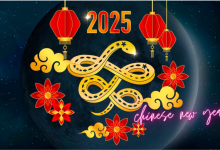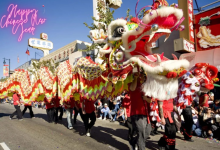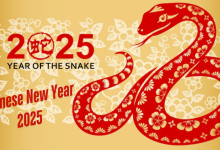chinese new year – Key Traditions of Chinese New Year

Chinese New Year, also known as the Lunar New Year or Spring Festival (春节), is one of the most significant and widely celebrated holidays in the world. Rooted in centuries of tradition, this festival marks the beginning of a new year on the traditional Chinese lunar calendar. It is a time for family reunions, vibrant festivities, and honoring cultural heritage. In 2024, Chinese New Year falls on Saturday, February 10, ushering in the Year of the Dragon—a symbol of strength, success, and good fortune.
Let’s explore the fascinating history, traditions, and modern celebrations of Chinese New Year.
The History of Chinese New Year
The origins of Chinese New Year date back over 3,000 years to ancient agricultural societies in China. It was initially celebrated as a way to mark the end of winter and welcome spring. Over time, the festival evolved to incorporate myths, legends, and spiritual significance.
One of the most well-known stories involves the mythical beast Nian (年), which would terrorize villagers at the start of each year. According to legend, Nian was frightened by loud noises, bright lights, and the color red. These elements became central to Chinese New Year celebrations, shaping the traditions we see today.
Key Traditions of Chinese New Year
- Reunion Dinner (年夜饭)
The most anticipated event of Chinese New Year is the Reunion Dinner, held on Chinese New Year’s Eve. Families gather to share an elaborate feast featuring symbolic dishes:- Fish (鱼): Represents surplus and prosperity.
- Dumplings (饺子): Symbolize wealth because their shape resembles gold ingots.
- Noodles: Represent longevity when eaten uncut.
- Cleaning and Decorating
Before the New Year begins, homes are thoroughly cleaned to sweep away bad luck and welcome good fortune. Doors and windows are adorned with red couplets, lanterns, and paper cutouts, often featuring phrases like “福” (good fortune). - Red Envelopes (红包)
Red envelopes, or hongbao, are given to children and unmarried individuals during the festival. These envelopes contain money and are a token of good luck and blessings for the year ahead. - Lion and Dragon Dances
Performances like lion dances and dragon dances are integral to Chinese New Year celebrations. Accompanied by drums and cymbals, these dances are believed to bring prosperity and ward off evil spirits. - Firecrackers and Fireworks
Lighting firecrackers and fireworks is a traditional way to celebrate Chinese New Year. The loud noises are thought to drive away bad luck and evil spirits, welcoming a fresh start.
The 15 Days of Celebration
Chinese New Year lasts for 15 days, each with its own customs and significance. Here’s a quick overview:
- Day 1 (初一): The official start of the New Year, dedicated to family gatherings and honoring deities.
- Day 2 (初二): Married daughters visit their parents.
- Day 7 (人日): Known as “Everyone’s Birthday,” celebrating the creation of humanity.
- Day 15 (元宵节): The Lantern Festival marks the end of the celebrations with lantern displays, riddles, and sweet glutinous rice balls (tangyuan).
The Zodiac Significance
Chinese New Year is also closely tied to the Chinese Zodiac, a 12-year cycle represented by animals like the Rat, Ox, Tiger, and Dragon. Each zodiac sign is associated with specific personality traits and fortunes. For instance, 2024, the Year of the Dragon, is expected to bring ambition, leadership, and success.
Modern Celebrations Around the World
Chinese New Year is no longer confined to China. It is celebrated by Chinese communities and millions of people worldwide, particularly in countries like Singapore, Malaysia, Indonesia, and the Philippines. Cities like San Francisco, London, and Sydney also host spectacular Chinese New Year parades, complete with dragon dances, floats, and cultural performances.
With the advent of technology, virtual celebrations have gained popularity. Families separated by distance now connect via video calls, and digital red envelopes are exchanged through apps like WeChat and Alipay.
How to Celebrate Chinese New Year
Whether you’re part of the Chinese community or simply want to join the festivities, here are a few ways to celebrate Chinese New Year in 2024:
- Host a Reunion Dinner: Cook or order traditional dishes like dumplings, spring rolls, and steamed fish.
- Decorate Your Home: Use red lanterns, couplets, and paper cutouts to create a festive atmosphere.
- Learn About the Chinese Zodiac: Discover your zodiac sign and what the Year of the Dragon holds for you.
- Attend Local Celebrations: Join a Chinese New Year parade or cultural event in your area.
- Share Red Envelopes: Give small red envelopes to friends or family to spread blessings and good fortune.
The Spirit of Chinese New Year
At its core, Chinese New Year is about reconnecting with loved ones, expressing gratitude, and looking forward to a prosperous future. It is a celebration that transcends borders and unites people through shared traditions and joy.
As we prepare to welcome the Year of the Dragon in 2024, let’s embrace the values of hope, resilience, and togetherness that define this beautiful festival. Whether you’re lighting firecrackers, sharing a meal, or simply learning about the traditions, may the spirit of Chinese New Year bring you happiness and prosperity.









